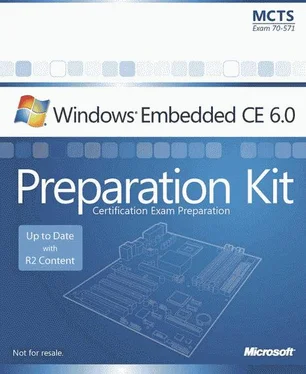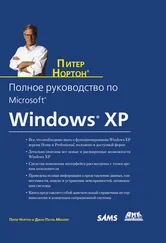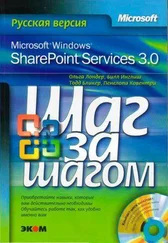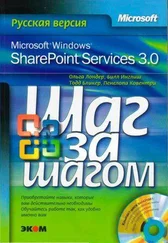Nicolas Besson - Microsoft Windows Embedded CE 6.0 Exam Preparation Kit
Здесь есть возможность читать онлайн «Nicolas Besson - Microsoft Windows Embedded CE 6.0 Exam Preparation Kit» весь текст электронной книги совершенно бесплатно (целиком полную версию без сокращений). В некоторых случаях можно слушать аудио, скачать через торрент в формате fb2 и присутствует краткое содержание. Город: Redmond, Год выпуска: 2008, Издательство: Microsoft, Жанр: Руководства, ОС и Сети, Программы, на английском языке. Описание произведения, (предисловие) а так же отзывы посетителей доступны на портале библиотеки ЛибКат.
- Название:Microsoft Windows Embedded CE 6.0 Exam Preparation Kit
- Автор:
- Издательство:Microsoft
- Жанр:
- Год:2008
- Город:Redmond
- ISBN:нет данных
- Рейтинг книги:5 / 5. Голосов: 1
-
Избранное:Добавить в избранное
- Отзывы:
-
Ваша оценка:
- 100
- 1
- 2
- 3
- 4
- 5
Microsoft Windows Embedded CE 6.0 Exam Preparation Kit: краткое содержание, описание и аннотация
Предлагаем к чтению аннотацию, описание, краткое содержание или предисловие (зависит от того, что написал сам автор книги «Microsoft Windows Embedded CE 6.0 Exam Preparation Kit»). Если вы не нашли необходимую информацию о книге — напишите в комментариях, мы постараемся отыскать её.
Microsoft Windows Embedded CE 6.0 Exam Preparation Kit — читать онлайн бесплатно полную книгу (весь текст) целиком
Ниже представлен текст книги, разбитый по страницам. Система сохранения места последней прочитанной страницы, позволяет с удобством читать онлайн бесплатно книгу «Microsoft Windows Embedded CE 6.0 Exam Preparation Kit», без необходимости каждый раз заново искать на чём Вы остановились. Поставьте закладку, и сможете в любой момент перейти на страницу, на которой закончили чтение.
Интервал:
Закладка:
Lesson Summary
Platform Builder for Windows Embedded CE 6.0 R2 comes with a file-based catalog system that you can use to contain your own catalog items by including them in separate catalog files in the Platform or 3rdParty directory within the %_WINCEROOT% directory tree. The file format of catalog files is XML and the file-name extension is .pbcxml. Platform Builder automatically enumerates the .pbcxml files when you start Visual Studio or refresh the Catalog Items View in Solution Explorer. To add a new catalog item to the Windows Embedded CE catalog, you can start with a new catalog file or create a copy of an existing catalog item and then edit the file content by using the Catalog Editor. There is no need to edit .pbcxml files by using a text editor, such as Notepad, because all settings are available directly within Platform Builder. Among other things, you can specify SYSGEN and additional environment variables for conditional C/C++ build directives, registry modifications, and dependency definitions.
Lesson 5: Generating a Software Development Kit
Developers who want to create applications for a target device require a Software Development Kit (SDK). An SDK will automatically correspond to your OS design so that the developers can only use those features that are actually available. The SDK includes features that are present in the OS design so that application developers do not accidentally create code that fails to run at run time due to an unsupported API.
After this lesson, you will be able to:
■ Identify the purpose of an SDK.
■ Generate an SDK.
■ Localize SDK files on your hard drive.
■ Use an SDK.
Estimated lesson time: 20 minutes.
Software Development Kit Overview
In order to compile and create valid applications for your OS design, developers need to include the necessary header files and link to the correct libraries in their development projects. You must ensure that the SDK for your OS design contains all required header files and libraries, including headers and libraries for any custom components you want to provide to application developers. Platform Builder for Windows Embedded CE 6.0 R2 enables you to create SDKs for your OS designs by exporting all the required header files and libraries.
SDK Generation
It is generally the task of the OS design creator to generate and distribute customized SDKs. Platform Builder provides an SDK export feature for this purpose. The SDK export feature creates the customized SDK for your OS design, along with a .msi file that includes the SDK Setup Wizard.
Configuring and Generating an SDK
To create and configure an SDK by using the SDK export feature of Platform Builder, follow these steps:
1. Configure your OS design and build it at least once in the Release configuration.
2. Display Solution Explorer, right-click SDKs, and select Add New to display the SDK Property Pages dialog box.
3. In the SDK Property Pages dialog box, configure the Install properties of the SDK and define the MSI Folder Path, MSI File Name, and Locale, as illustrated in Figure 1-7. You can also specify a number of custom settings.
4. To include additional files, select the Additional Folders node in the SDK Property Pages dialog box.
5. Click OK.
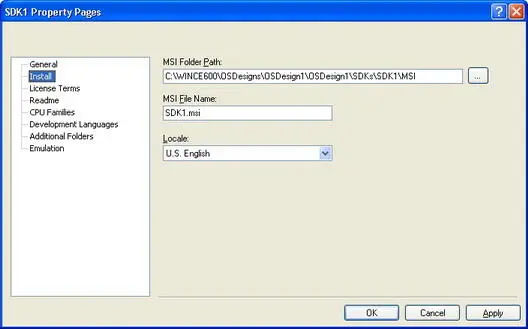
Figure 1-7SDK Property Pages dialog box
Adding New Files to an SDK
You can add files to an SDK manually by either using the Additional Folders option in the SDK property pages or by copying them into the SDK directory for your OS design, typically in %_WINCEROOT%\OSDesigns\< Solution Name >\< OS Design Name >\WinCE600\< Platform Name >\SDK. It is also possible to automate that process by using .bat and sources files, so that the build engine copies the latest version of the files into the SDK each time you perform a build.
Make sure you copy the files into the following SDK subdirectories:
■ IncContains the header files included in the SDK.
■ Lib\< Processor Type >\< Build Type > Contains the libraries included in the SDK.
Installing an SDK
After completing the SDK build process, you can find the .msi file in the SDK subdirectory of your OS design folder. This is typically %_WINCEROOT%\OSDesigns\< Solution Name >\< OS Design Name >\SDKs\SDK1\MSI\< SDK Name >.msi. You can freely redistribute this MSI according to your licensing agreements for Platform Builder and any third-party components included.
You can install this MSI package on any computer with Visual Studio 2005 and use it to develop Windows Embedded CE applications for your target device. On a computer with the SDK installed, you can find the files under %PROGRAMFILES%\Windows Embedded CE Tools\WCE600.
Lesson Summary
Windows Embedded CE 6.0 R2 is a componentized operating system, which implies that application developers require a customized SDK that corresponds to your OS design in order to develop applications that will work on your target device. The custom SDK should not only include the required Windows Embedded CE components, but also the headers and libraries for any custom components that you included in the OS design, to avoid problems due to missing files or libraries at build and run time. Platform Builder provides an SDK export feature to generate SDKs and to create an MSI package for convenient SDK deployment on application development computers by means of an SDK Setup Wizard.
Lab 1: Creating, Configuring, and Building an OS Design
In this lab, you create an OS design, and then customize that design by adding components from the catalog. It is important to complete all the procedures in this lab, because it provides the foundation for subsequent exercises in other chapters of this Microsoft Windows Embedded CE 6.0 R2 Exam Preparation Kit.
To help you successfully master the procedures presented in this lab, see the document "Detailed Step-by-Step Instructions for Lab 1" in the companion material for this book.
►Create an OS Design
1. In Visual Studio 2005 with Platform Builder for Windows Embedded CE 6.0 R2, select the File menu, New submenu, and Project menu option, and then create a new OS design project.
2. Use the default OS design name (OSDesign1).
3. Visual Studio will launch the Windows Embedded CE 6.0 OS Design Wizard.
4. Select the check box for Device Emulator: ARMV4I in the BSP list and click Next.
5. From the list of available design templates, select PDA Device. From the list of available design variants select Mobile Handheld.
6. Deselect .NET Compact Framework 2.0 and ActiveSync on the next wizard page, as illustrated in Figure 1-8. The Internet Browser and Quarter VGA Resources- Portrait Mode check boxes should remain checked.
7. On the Networking Communications wizard page, deselect TCP/IPv6 Support and Personal Area Network (PAN) to exclude Bluetooth and Infrared Data Association (IrDA) support. Leave Local Area Network (LAN) selected.
8. Click Finish to complete the Windows Embedded CE 6.0 OS Design Wizard. On completion, Visual Studio opens your OS design project. The Solution Explorer tab should be active and show your new OS design project under the Solution container.
Читать дальшеИнтервал:
Закладка:
Похожие книги на «Microsoft Windows Embedded CE 6.0 Exam Preparation Kit»
Представляем Вашему вниманию похожие книги на «Microsoft Windows Embedded CE 6.0 Exam Preparation Kit» списком для выбора. Мы отобрали схожую по названию и смыслу литературу в надежде предоставить читателям больше вариантов отыскать новые, интересные, ещё непрочитанные произведения.
Обсуждение, отзывы о книге «Microsoft Windows Embedded CE 6.0 Exam Preparation Kit» и просто собственные мнения читателей. Оставьте ваши комментарии, напишите, что Вы думаете о произведении, его смысле или главных героях. Укажите что конкретно понравилось, а что нет, и почему Вы так считаете.
